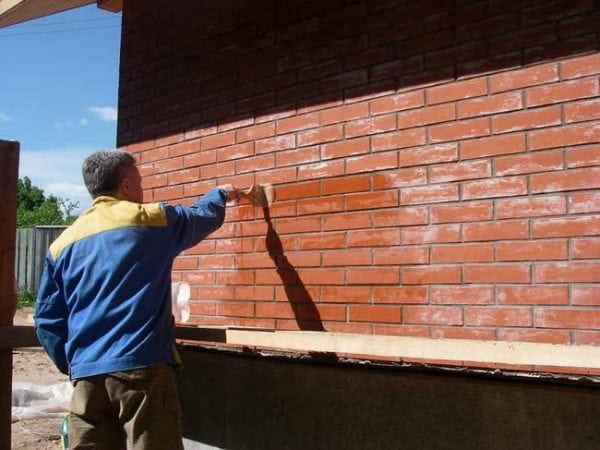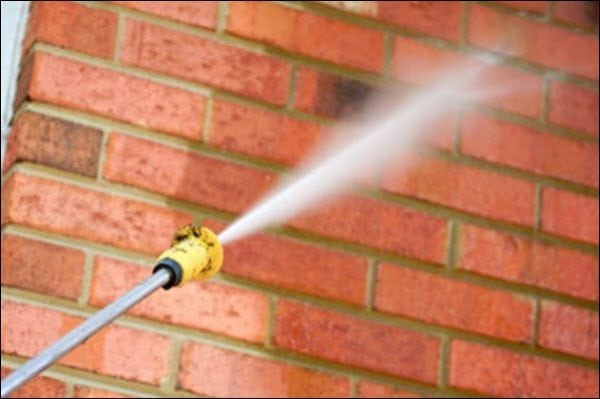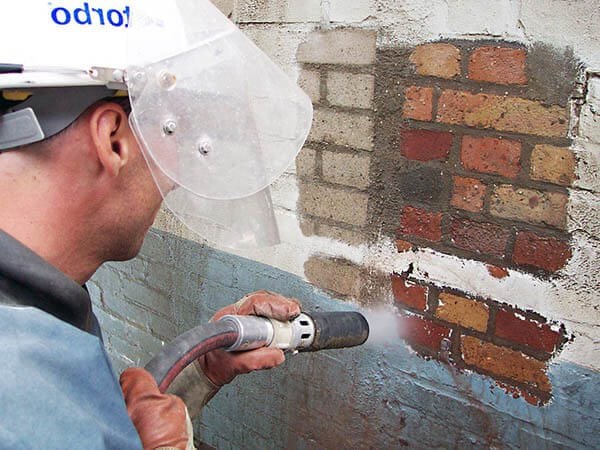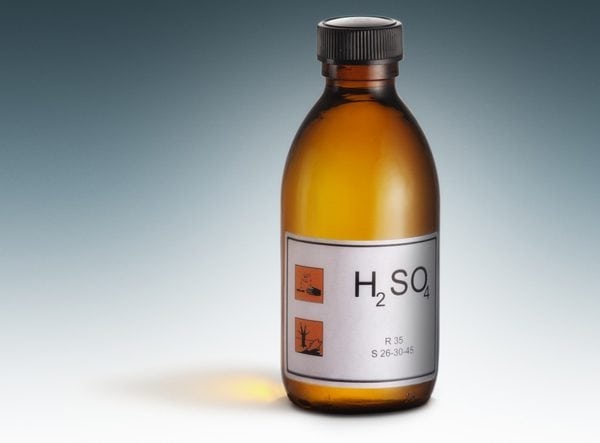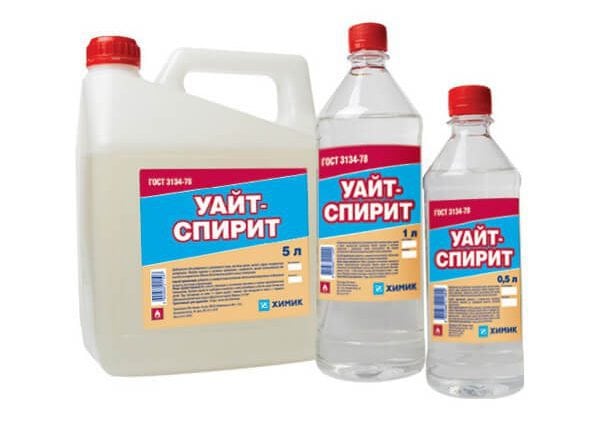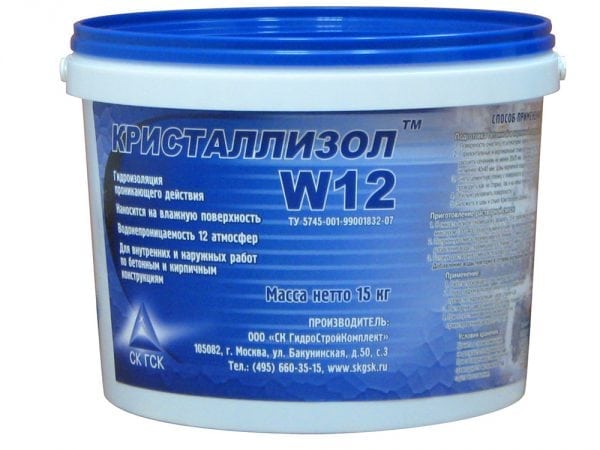Brick processing can pursue different goals, for example: cleaning from dirt or impregnation to give the material new qualities. Below we consider the main processing options for this building material.
- Contamination removal
- Water jet cleaning
- Sandblasting method
- Manual or mechanical cleaning
- Chemical cleaning
- Some useful tips
- Brick impregnation
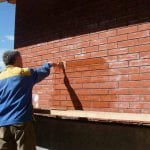
Contamination removal
Most often, the brick is processed in order to clean it from traces of dirt and building dust. Due to the high porosity, the brick is easily contaminated, so in order to maintain an attractive appearance of the material, it is sometimes necessary to clean it. In addition to the remnants of the mortar, a variety of types of contaminants can appear on the brick, including paint, dirt, bitumen, fuel oil, lime, soot, and rust.
Often the brick is covered with mold or there are traces of efflorescence on it. It takes a lot of time and effort to remove the impurities, since cleaning the brick is a very laborious job.
In practice, usually the question of cleaning the material appears after the erection of brick walls from ordinary or facing bricks. Also, it is often necessary to clean the old brick from the solution, which they decided to reuse. The specific method for cleaning the material is selected based on the type of contamination.
In the construction industry, the following types of cleaning are usually used:
- washing with a jet of water under high pressure;
- sandblasting technique;
- mechanical cleaning with a tool or manually (hammer, sandpaper, chisel, brush with hard bristles, hammer drill);
- the use of a special cleaning fluid, which can be either purchased ready-made or made in-house.
Below we will examine each method individually.
to contents ↑Water jet cleaning
High-pressure water jet (15-220 bar) remove, first of all, efflorescence. Despite this pressure, cleaning is very gentle, without damaging the material. In addition, the method is environmentally friendly.
Sandblasting method
Cleaning is carried out using special equipment and under high pressure. During the process, the brick is treated with sand or other abrasive.
The purpose of sandblasting is the removal of foreign materials and surface preparation for applying various coatings to it. Bricks are processed with sand prior to puttying or painting. Thanks to sandblasting, you can clean the brick from old paint, bitumen, fuel oil, plaster, soot and all kinds of substances containing dyes. The result is a clean surface suitable for further processing.
The tasks of sandblasting and finishing are not the same as in the case of surface preparation. The difference is that this technique involves improving the appearance of the product and increasing its performance, and not just preparing for coating.
to contents ↑To confidently own sandblasting equipment, you need a certain qualification. Therefore, the cost of such work is quite high.
Manual or mechanical cleaning
Typically, the method is used to remove residual solution or other solid foreign matter from the surface of the material.The main tools for cleaning are a drill, sandpaper, a puncher, a jackhammer, a brush with stiff bristles, a chisel, a hammer.
When carrying out work, you need to take care of your own safety, so you will need protective glasses, a respirator, rubber gloves.
Red brick is cleaned only by hand. To do this, chop off pieces of the solution with a hammer and a chisel. After removing large pieces, the crayons are cleaned with sandpaper with large grains.
Silicate brick is stronger, so it can be cleaned using techniques such as a hammer drill or jackhammer. Then, as in the case of red brick, sanding is carried out. The process ends by soaking the material in water in order to completely wash off the residual solution. During soaking, you can additionally use a brush with a stiff bristle. Before using, the brick must be dried.
to contents ↑
Chemical cleaning
Based on the type of contamination, a certain chemical composition is applied, which can either be purchased or made independently. Also, during the work, a tool is used, as well as during mechanical cleaning.
Cement mortar can be removed as follows:
- If the brick is made of ceramic - it needs to be boiled in water. In this case, sulfuric acid must be poured into the water in advance. One part of sulfuric acid will need one part of water. At the same time, one must not forget about protective measures (special clothing and glasses), otherwise burns of the skin and respiratory organs are possible. After dipping into such a mixture, it will not be difficult to remove the old solution. However, in this way it is impossible to remove the solution from the silicate brick - it will simply fall apart.
- If the pollution is insignificant (for example, only at the seams of the masonry), the brick can be wiped with detergents from the arsenal of auto chemical goods. After applying the product, the wall must be allowed to dry, and then rub it with a mixture of ground brick with vegetable oil.
- Diluted hydrochloric acid may also be used. Before treating the masonry with acid, it is necessary to wet the bricks with water. The work should be carried out carefully so that hydrochloric acid does not damage the mortar in the brickwork.
Other contaminants can be disposed of as follows:
- If the wall is painted, stains can be removed using household cleaning products.
- The efflorescence, soot on the stove and traces of rust can be removed with a hard bristle brush, water and detergents.
- To remove moss or lichen, you need to wet the brick with water, and then treat it with a detergent, but not with any, but with a specialized one (for example, Sammalpois).
- To remove oil, tar or bitumen stains, you will need one of the organic solvents. White spirit, turpentine or kerosene is suitable. In order not to leave streaks, you need to process the maximum possible surface area.
- To remove efflorescence, it is recommended to use a substance such as Decap ’sols Guard. Before applying it, you need to check the quality of the waterproofing. Also, you first need to clean the seams.
Some useful tips
- Outflows will become less likely if the brick is well dried, there is waterproofing, sewage bends.
- During masonry work should be carried out carefully so as not to allow excessive contamination of the material. This will require additional efforts, but will further reduce the need for cleaning brick walls.
- When cleaning a brick, one must not forget about the technological nuances, otherwise you can damage the material.
- When working with a facing brick or stone, use a dry sponge to avoid damage to the surface.
- To remove traces of soot on the facing brick, it is recommended to use specialized pastes and household chemicals.
Brick impregnation
The impregnation process is called hydrophobization. The technique can be partially attributed to cleaning methods, since, thus, efflorescence is removed.
However, the main purpose of hydrophobization is to give the material (stone, brick, concrete, ceramics, etc.) protective water-repellent properties and resistance to low temperatures.During hydrophobization, special impregnation for bricks is used. As a result, the material interacts differently with moisture.
Most often, silicon is the key component of the water repellent, although other substrates can be used. An example is Crystallizole, one liter of which is enough to treat 150 square meters of surface.
The drug allows not only to increase the frost resistance of the material, but also increases its strength by about a quarter. The product is often used to protect surfaces in rooms with high humidity (for example, baths and saunas). The drug allows you to block moisture from entering the coating structure, and also prevents the appearance of microorganisms, including fungi.
Another important quality of Kristallizol, like any other good impregnation, is that the drug prevents the accumulation of dirt on the surface of the material, which allows for a greater decorative effect. And finally, the use of impregnation makes it possible to reduce the consumption of topcoat (for example, paint).
A good water repellent differs in a number of qualities:
- the absence of a visible film after treatment with the drug;
- environmental friendliness;
- fire safety;
- neutrality to existing vapor tightness;
- durability.
Before use, "Crystalizole" is diluted in water in a ratio of 1 to 30. Then the solution is applied evenly to dry and clean bricks. For a brick, one layer is enough. More layers are needed only for concrete coatings.
Processing the brick in order to clean it or improve its properties will significantly extend the life of the masonry and improve the decorative qualities of the material. At the same time, one should not forget about the timely care of the masonry and periodically clean it from emerging contaminants.

